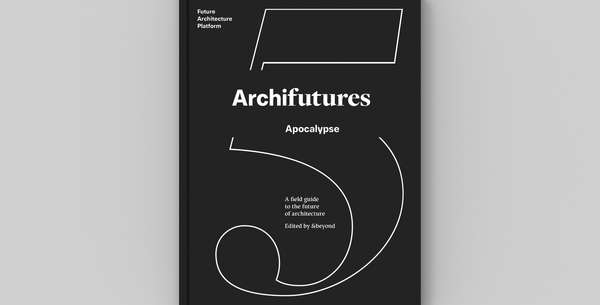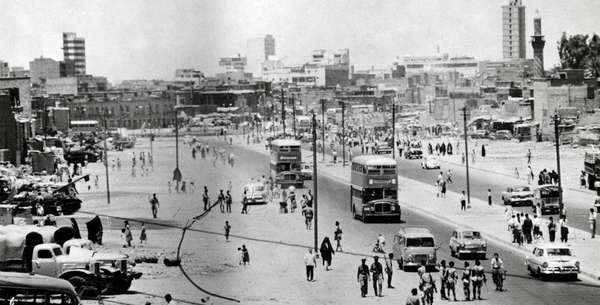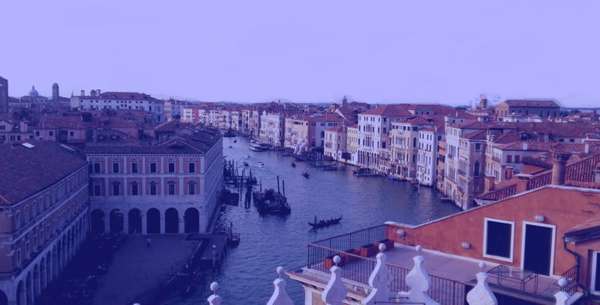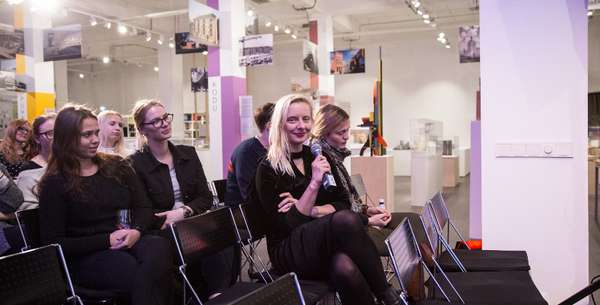Idea by
Tania Tovar Torres
Proyector
Call for ideas 2018
In Articulo Mortis
In Articulo Mortis
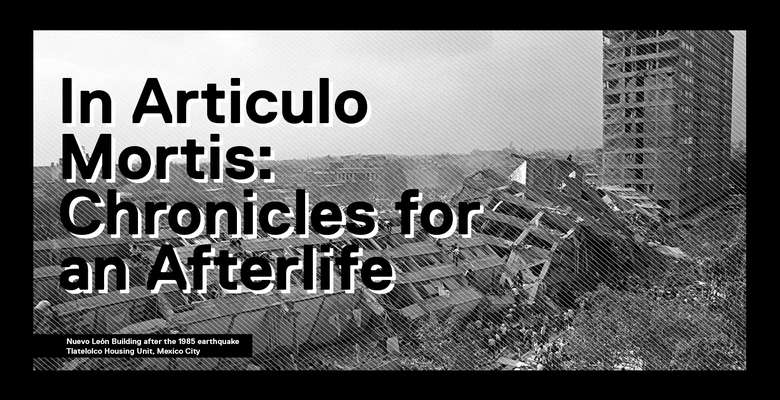
How long does architecture last? According to ancient canons, the physical actions of architecture and its traces on earth were intended to endure. Confident in its solidity and strength, it portrayed its aspirations of permanence and immutability. However, what happens when a building ceases to exist? The project makes an argument around the possibility of architecture no longer surviving as an object –building– but rather as a document, a story.
In Articulo Mortis is a documentary and literary project that explores the histories of buildings on the eve of their demise. It turns architecture into the central character of a narrative, restoring to literature the vast territories of a building’s afterlife. Acknowledging history as remembrance, but focusing on it as a way of preservation and a tool for transformation, where the future of architecture lies precisely in the documentation of its past.
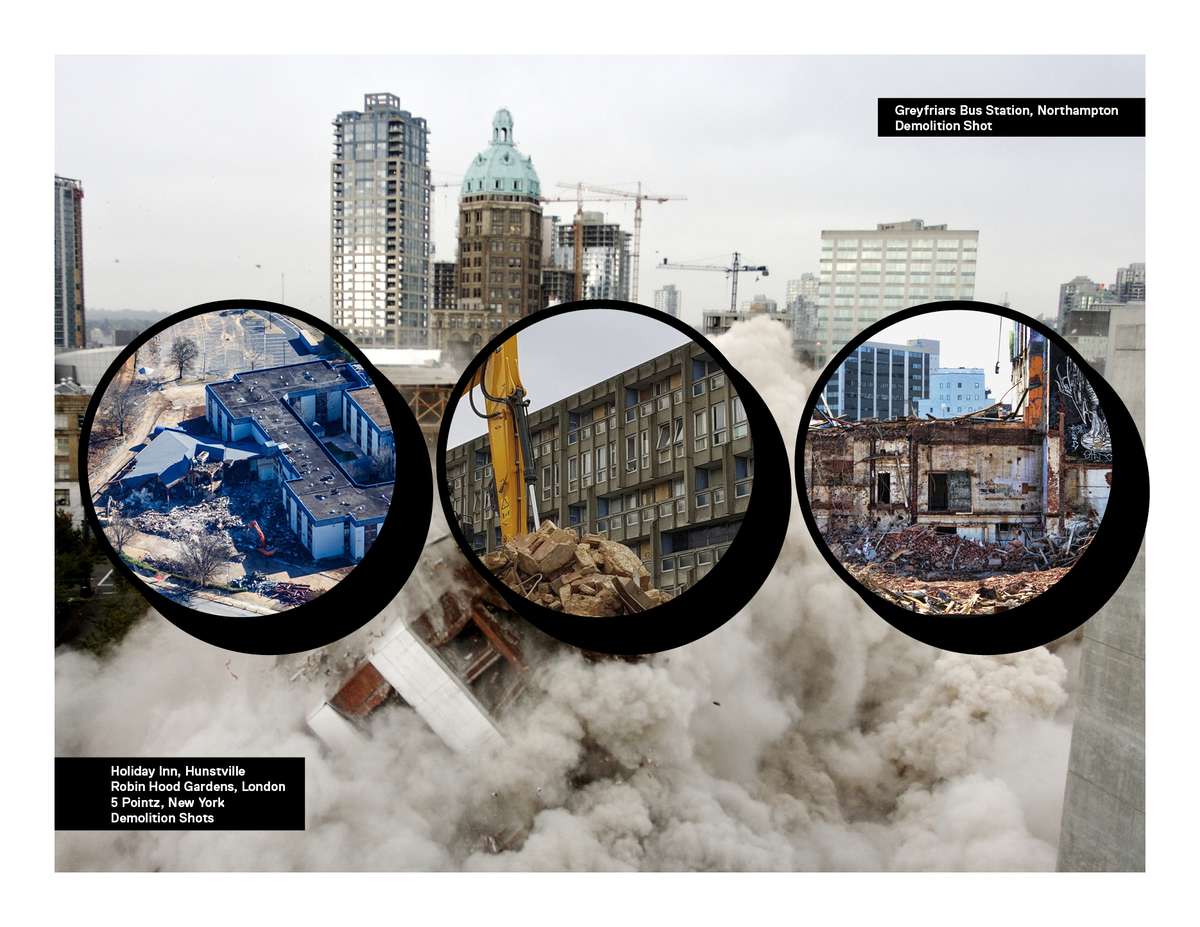
Questioning the stability and temporality of architecture’s physicality, and its relation to its own future, incorporates the question to architecture’s imaginary: What happens when Architecture as a material object can no longer be a reference? The demise (obliteration) of a building is not a certainty as human death is, and dealing with the possibility of it, makes us wonder what the future of architecture is.
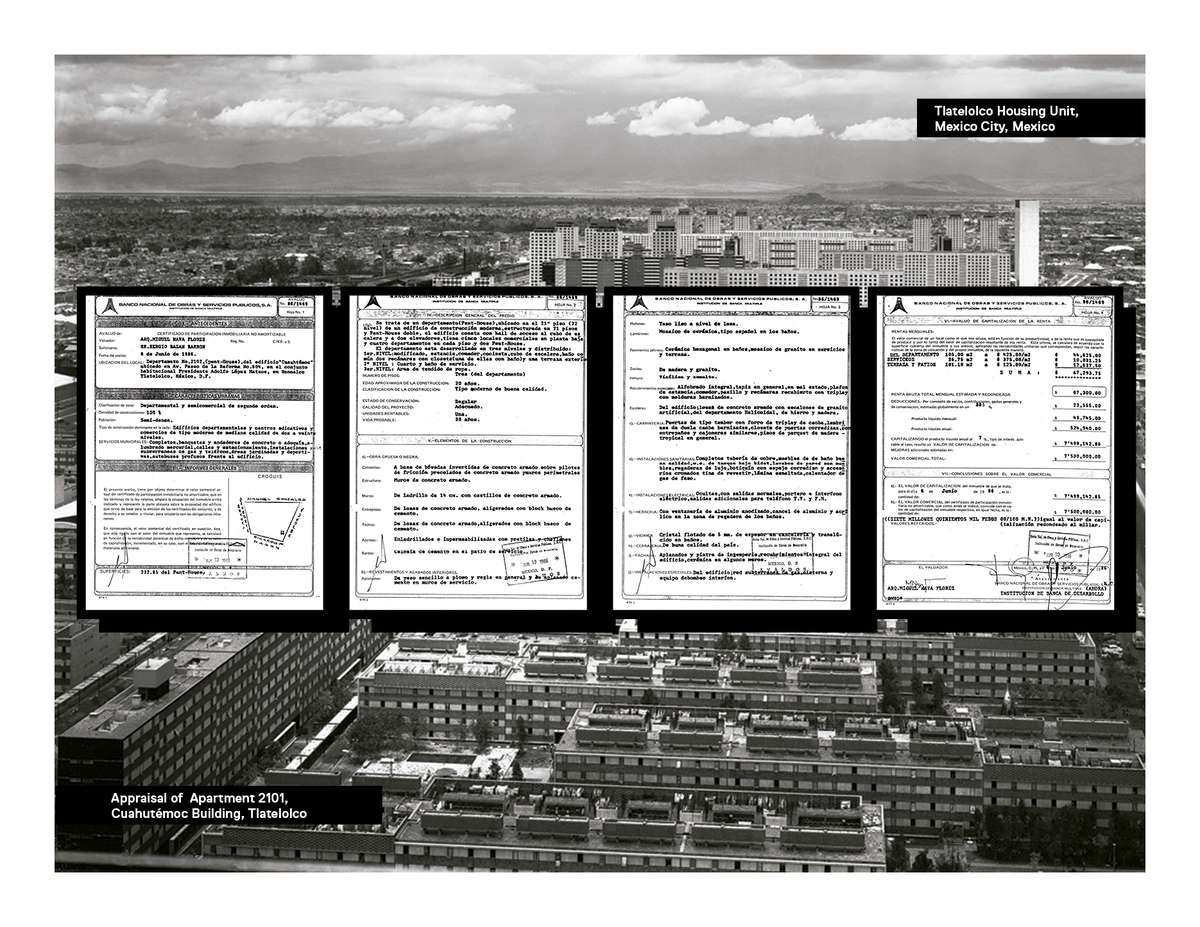
In times where architecture tends towards endless preservation, even after death itself, we need to think of a building’s afterlife as a natural stage intrinsically related to its documentation, its memory in the popular imaginary and whatever truth may come out of them. Aware of the fact that in any case, the future of architecture is no longer an issue of physical preservation only, but rather one that will live In any other form but that one of a building.

As we write stories to remember a building, today’s post-truth era comes across the conflict of objectivity and subjectivity, truth and falseness, a time where fiction often overcomes reality, when memory loses credibility and yet, adds value to things past and what we wish to preserve. Laying then at the core of the project is the confrontment of the multiple dichotomies in the writing of history, presenting them as part of a narrative through time and space, past and present, text and image.
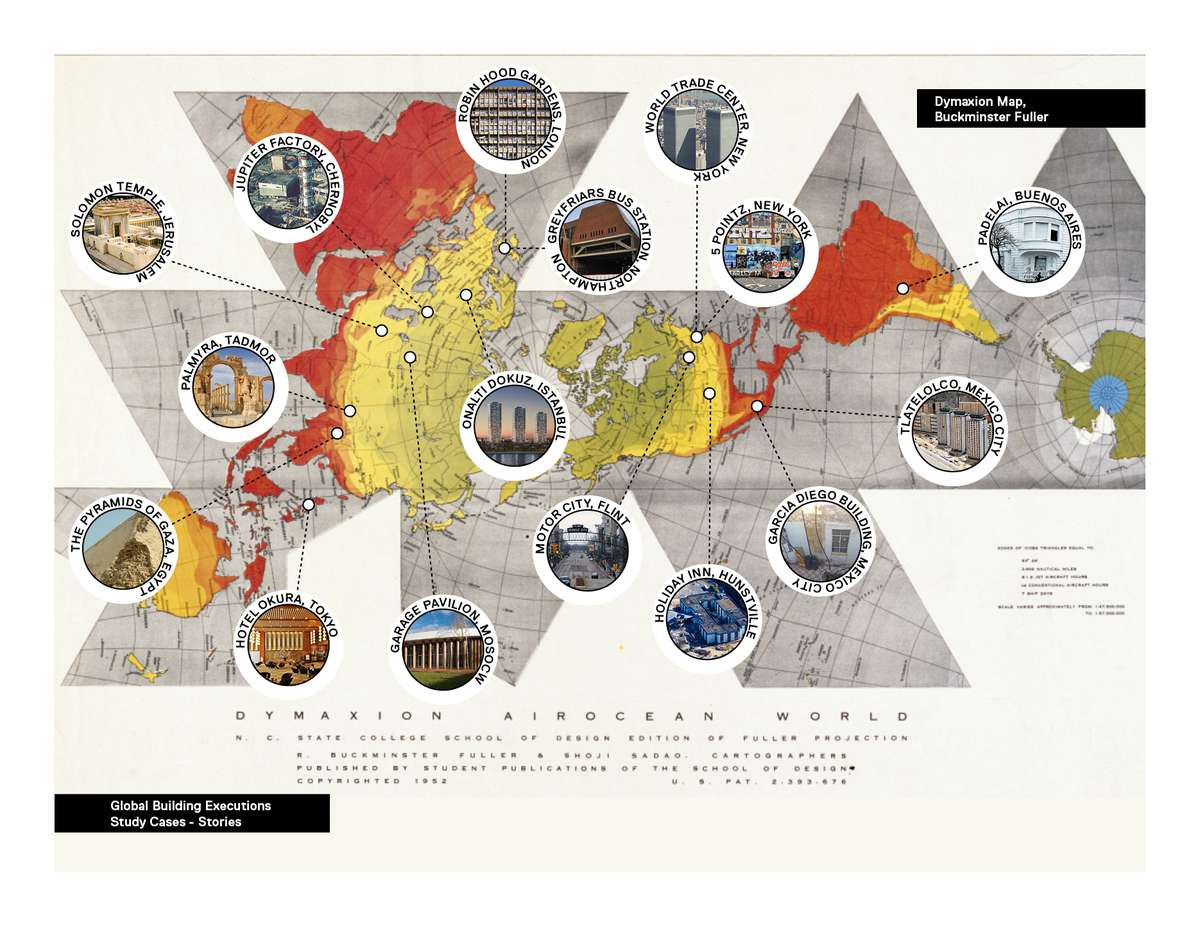
The project visualizes the lives and stories of buildings sentenced to death or executed all over the world for different reasons, through archival and documentary descriptions in an exercise that interprets and displays architecture in a historic “objective” way and confronts this vision with the “reality or fiction” of a popular, narrative and literary way of approaching history.

The narratives in the project reconstruct physical space then as something that can only be seen and built through the multilayered politics and conflicts of the archival and the official in conjunction with popular history, gaining specificity and insight, while managing to make visible the relativity and fragility of architecture’s weight and materiality before the light but powerful pages of history.
In Articulo Mortis
In Articulo Mortis

How long does architecture last? According to ancient canons, the physical actions of architecture and its traces on earth were intended to endure. Confident in its solidity and strength, it portrayed its aspirations of permanence and immutability. However, what happens when a building ceases to exist? The project makes an argument around the possibility of architecture no longer surviving as an object –building– but rather as a document, a story.
In Articulo Mortis is a documentary and literary project that explores the histories of buildings on the eve of their demise. It turns architecture into the central character of a narrative, restoring to literature the vast territories of a building’s afterlife. Acknowledging history as remembrance, but focusing on it as a way of preservation and a tool for transformation, where the future of architecture lies precisely in the documentation of its past.

Questioning the stability and temporality of architecture’s physicality, and its relation to its own future, incorporates the question to architecture’s imaginary: What happens when Architecture as a material object can no longer be a reference? The demise (obliteration) of a building is not a certainty as human death is, and dealing with the possibility of it, makes us wonder what the future of architecture is.
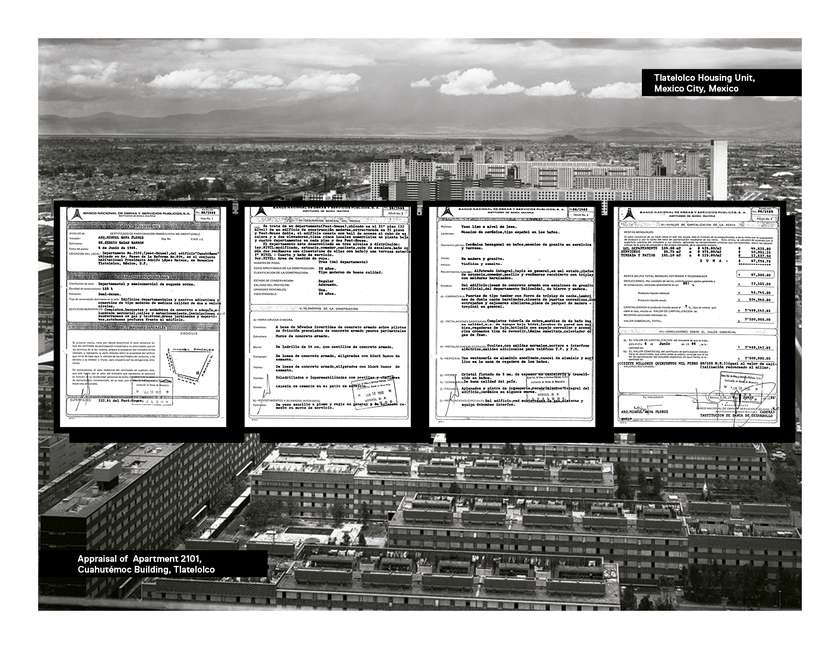
In times where architecture tends towards endless preservation, even after death itself, we need to think of a building’s afterlife as a natural stage intrinsically related to its documentation, its memory in the popular imaginary and whatever truth may come out of them. Aware of the fact that in any case, the future of architecture is no longer an issue of physical preservation only, but rather one that will live In any other form but that one of a building.
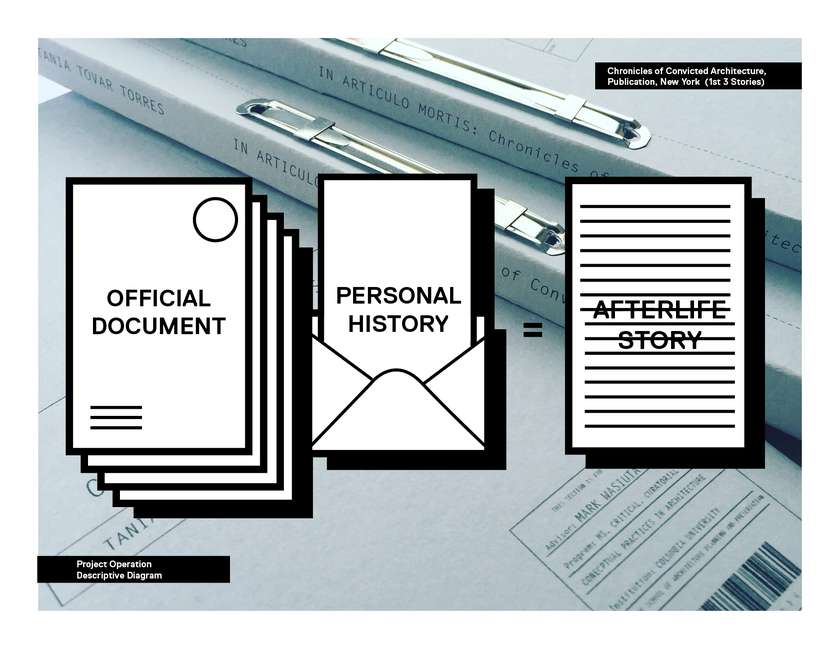
As we write stories to remember a building, today’s post-truth era comes across the conflict of objectivity and subjectivity, truth and falseness, a time where fiction often overcomes reality, when memory loses credibility and yet, adds value to things past and what we wish to preserve. Laying then at the core of the project is the confrontment of the multiple dichotomies in the writing of history, presenting them as part of a narrative through time and space, past and present, text and image.

The project visualizes the lives and stories of buildings sentenced to death or executed all over the world for different reasons, through archival and documentary descriptions in an exercise that interprets and displays architecture in a historic “objective” way and confronts this vision with the “reality or fiction” of a popular, narrative and literary way of approaching history.
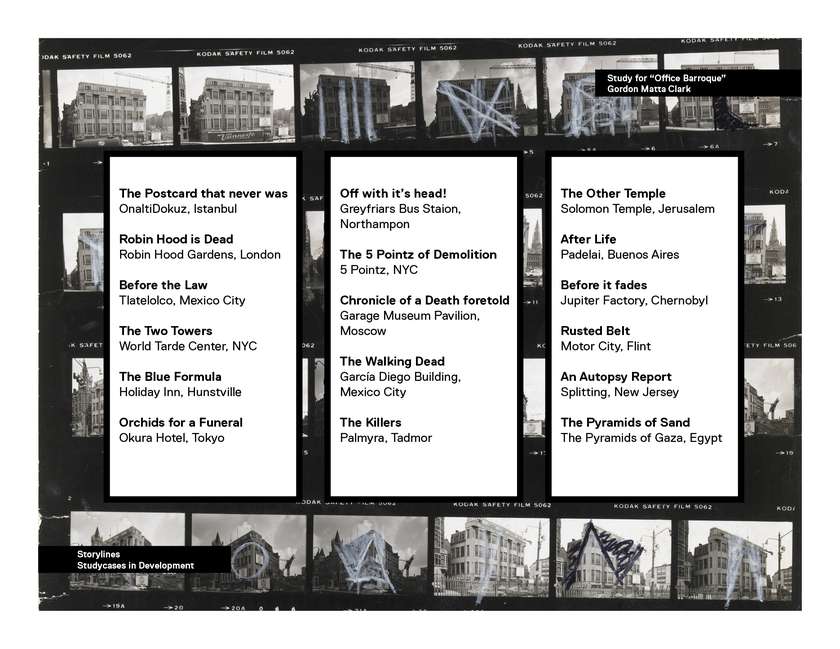
The narratives in the project reconstruct physical space then as something that can only be seen and built through the multilayered politics and conflicts of the archival and the official in conjunction with popular history, gaining specificity and insight, while managing to make visible the relativity and fragility of architecture’s weight and materiality before the light but powerful pages of history.
